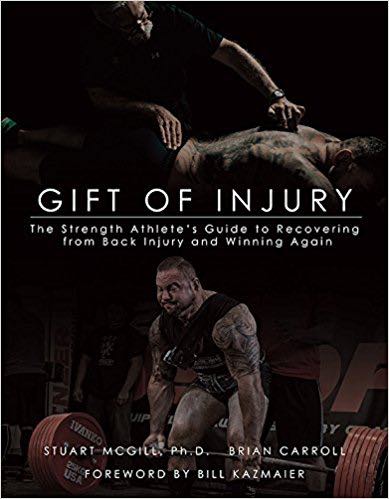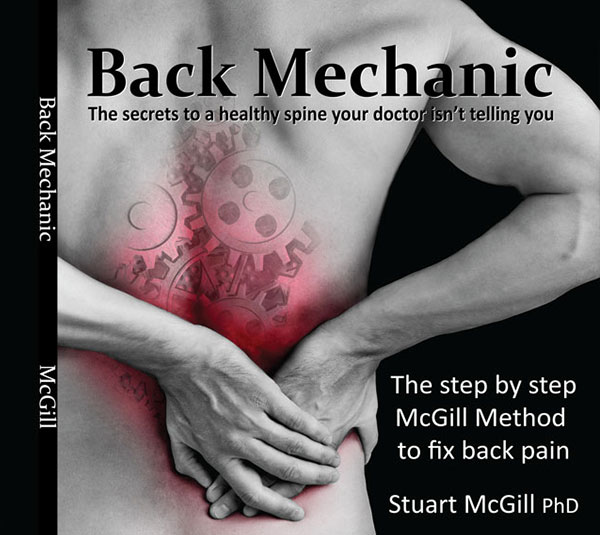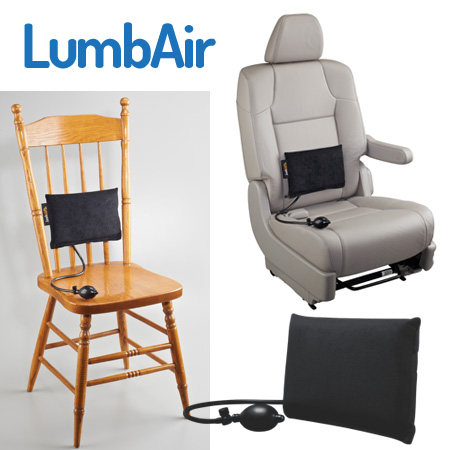05 Nov The First Session: Where My Rebuild Truly Began
Article Rundown
- My first session with McGill showed how targeted decompression could calm my nerve symptoms.
- I learned that even small transitions, like getting off the table, can protect or undo progress.
- Applying the least effective dose kept my unstable spine from getting more irritated.
- That assessment marked the very first step in my long and successful rebuild.
The First Session
When I first stepped into Dr. Stuart McGill’s assessment room in May of 2013, I was operating on equal parts hope and desperation. Years of heavy lifting had caught up with me. I was dealing with nerve symptoms running down my leg, a battered lumbar spine, and the crushing uncertainty that comes with not knowing if you’ll ever train pain-free again. I didn’t walk in expecting magic. I just wanted answers.
McGill greeted me with the kind of calm confidence you only see in someone who has solved thousands of spinal puzzles. There was no gimmick, no sales pitch—just curiosity and precision. His goal wasn’t to fix me in one visit. It was to understand what my spine was doing, how it was behaving, and if there was a movement direction that could turn the pain down instead of up.
Learning to Play “Spinal Jazz”
We started with prone traction. I laid on my stomach while he gently pulled on my leg, creating subtle decompression in the lower back. On video, it looks almost mundane. But McGill wasn’t just pulling—he was listening. Not to my words, but to how my body responded. He explained that we didn’t know which way this would go. It might calm my symptoms. It might exacerbate them. That uncertainty is the point of assessment.
At that time, I had evidence of retrolisthesis—think of the vertebrae shifting backward—and that shift can change how the discs behave under load. As he initiated traction, I felt a gradual easing in the pressure that had been sitting like a weight across my low back. It wasn’t dramatic. It was subtle, like a volume knob turning down.
McGill referred to this process as playing jazz. You make a small adjustment, read the reaction, adjust again. No protocol, no blind recipe. It’s an art form guided by anatomy and behavior.
Feeling Something I Hadn’t Felt in Years
As we continued, something unexpected happened. The tingling and burning symptoms down my calf—the L5 dermatome that had been screaming at me for months—began to ease. It was the first time I realized how much the peripheral nervous system reflects what’s happening at the spine. It wasn’t just pressure in my back; it was electricity traveling down a nerve root.
There’s a moment in the video where you can see the relief on my face. Not because the pain was gone, but because I finally had a direction. That’s more powerful than any stretch or manipulation you can throw at someone.
The Detail That Changes Everything
After a few minutes, McGill stopped me. He told me it was time to get off the table, but how I did it mattered. If I just bent forward and twisted my way to standing, I would undo every ounce of decompression he’d created. The average person never considers that. They chase relief, then throw it away getting up carelessly.
He coached me through a neutral-spine push-up off the table, preserving the change we had just created. It was such a simple instruction, but it carried a bigger lesson: your rehabilitation is only as good as the moments between your exercises.
That single cue ended up shaping how I got out of bed, off benches, and out of cars for months.
Why the Dose Matters
One thing that stuck with me was how cautious he was with the amount of traction. Too much decompression on an unstable spine can actually make nerve irritation worse. He watched closely—my breathing, my shoulders tightening, the micro-expressions you can’t fake. If he saw any shift toward sensitivity, he backed off immediately.
I didn’t fully appreciate it then, but this was the principle of the least effective dose. You don’t blast the spine into submission. You coax it. You guide it. You earn tolerance with patience.
More Than a Technique
People always ask me about inversion tables. Here’s the truth: hanging 290 pounds of me upside-down wasn’t going to solve anything. Without the right setup, right direction of pull, and careful transition back to standing, decompression becomes chaos. And chaos around an injured spine is never good.
McGill showed me that decompression works when it’s targeted, brief, and followed by smart movement. The tool matters far less than the technique behind it.
Seeing Progress in Real Time
By the end of the session, not only had the local spinal symptoms calmed, but the nerve irritation down my leg also faded. That is rare. Most people never get that kind of immediate change, and it’s not because they’re broken—it’s because no one ever tests movement in a meaningful way.
I left that room feeling something I hadn’t felt in a long time: control. For the first time in months, I understood why things hurt and what made them feel better. And once you understand the “why,” you can build a system around it.
The Beginning of the Climb
This session was the first brick in the rebuild documented in Gift of Injury. It was the start of a long, meticulous journey that ultimately led me to become the first person in history to squat over 1,300 pounds—pain and symptom-free—years after this assessment.
It didn’t happen because someone yanked on my spine or threw me into surgery. It happened because we respected the details.
Your Lesson in All of This
Don’t overlook the small things:
- How you transition off a table
- How you stand up
- How you decompress
- How you dose movement
Rehab isn’t won in big magical moments. It’s won in the silent, boring transitions you repeat fifty times a day.
Continue the Story
If you want to see the footage from this assessment and the full breakdown of how my spine behaved in real time, check out the video and the playlist on my channel. For coaching, consults, and the full methodology, visit PowerRackStrength.com. And, if you want the entire rebuild laid out step-by-step, pick up Gift of Injury and 10/20/Life.
Your spine can be rebuilt. But you have to respect the nuance.











Sorry, the comment form is closed at this time.